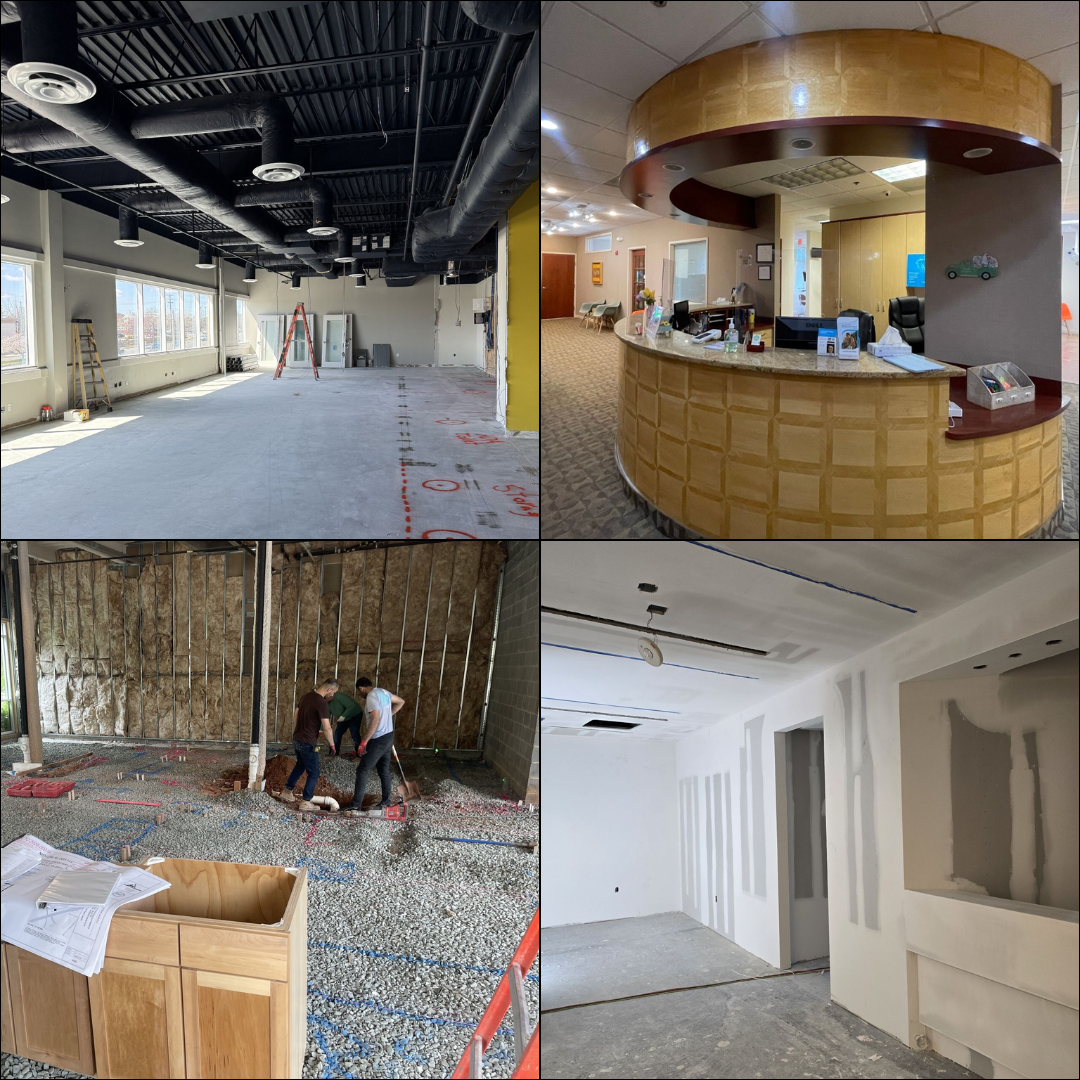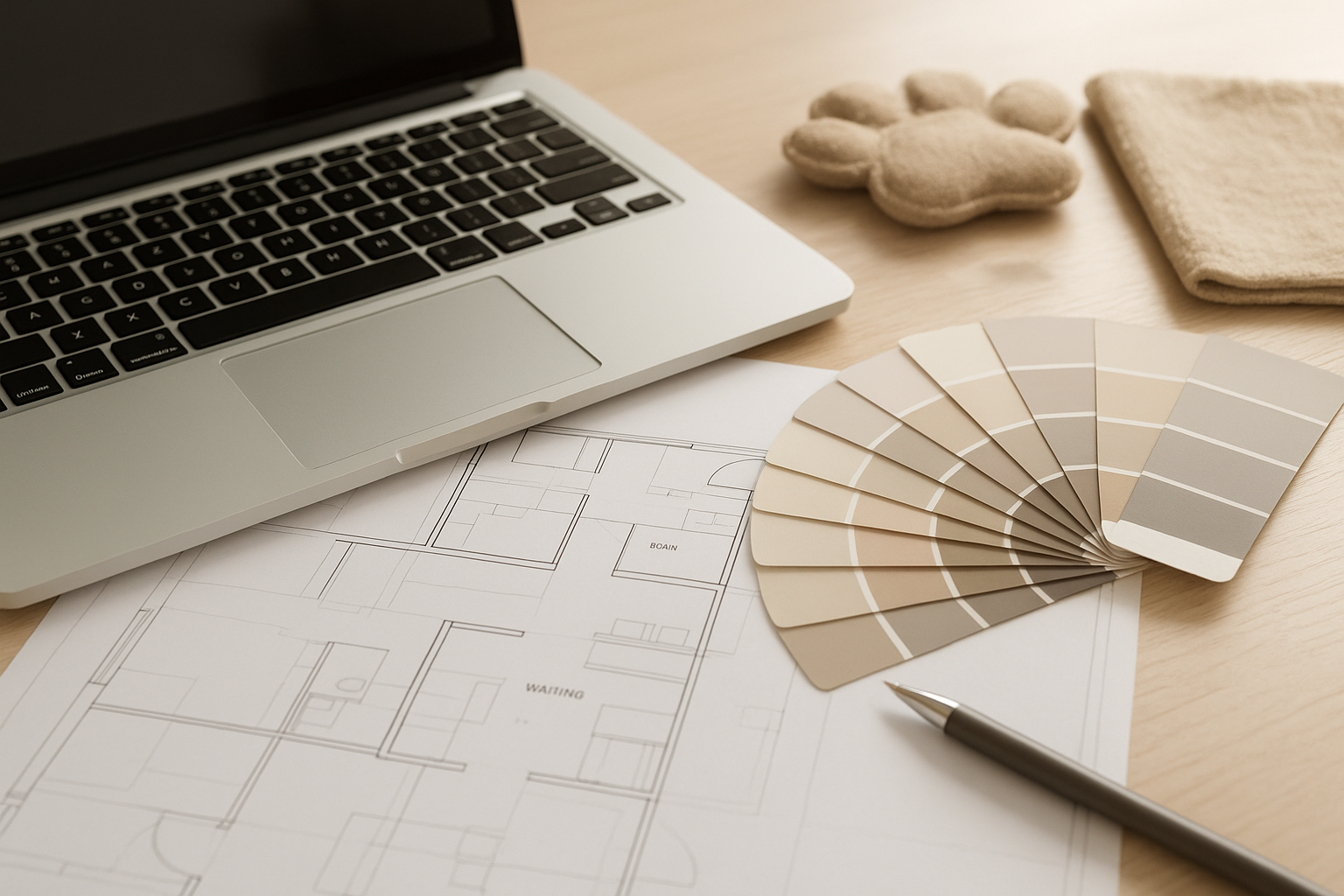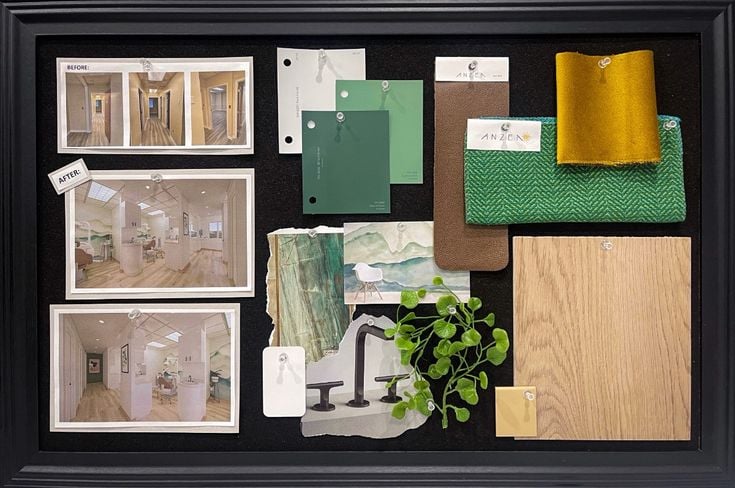
When you start touring spaces for your veterinary practice, it’s easy to focus on location, square footage, and rent. But one of the most important — and most misunderstood — factors in your space search is the condition the space is delivered in, also known as the space delivery type.
Not only does the delivery type impact your construction budget and timeline, but it also affects how you negotiate with the landlord, especially when it comes to your tenant improvement (TI) allowance. Knowing how to leverage each condition type during lease negotiations can make or break your project’s financial success.
Here’s what you need to know about each type — and how to use it to your advantage.
Gravel Floor (Bare Slab or Below-Slab Condition)
A gravel floor is the most raw space type — essentially a shell without a poured slab. It allows for complete design flexibility, especially for plumbing, which can be critical in veterinary layouts.
Budget Implication: Since underground utilities and slab work aren’t done, you’ll be footing that bill.
Leverage Tip: Because the landlord is delivering a space in its most incomplete state, you may be in a strong position to negotiate a higher TI allowance or request that the landlord handle some base building costs (like slab pour or main utility runs).
Cold Shell Condition
A cold shell includes basic structural components like walls, a roof, and sometimes storefront windows — but no HVAC, lighting, or restrooms.
Budget Implication: You’ll be responsible for all interior systems and finishes, which increases upfront costs.
Leverage Tip: This condition gives you an opportunity to negotiate more TI dollars to offset the cost of installing HVAC, electrical, and plumbing systems. Be sure to clarify exactly what the landlord is delivering — “cold shell” definitions can vary.
Warm Shell Condition
A warm shell comes with some infrastructure already in place, such as HVAC, restrooms, and basic lighting. It’s a step closer to build-out readiness.
Budget Implication: You’ll save on infrastructure but still need a full interior fit-out for veterinary use.
Leverage Tip: Because the landlord has already invested in making the space semi-functional, TI allowances may be smaller. However, you can negotiate more free rent instead, or request upgrades to existing systems (like increased electrical capacity).
Second Generation / Existing Built-Out Space
This is a previously occupied space, often by another medical or dental practice. If the layout works, it can be a cost-effective shortcut to opening your practice.
Budget Implication: You might save significantly on construction if the layout fits — but adapting a space not designed for veterinary use can also bring surprises.
Leverage Tip: Since the landlord is offering an “as-is” space, you may have less TI allowance to work with — but you can negotiate for demo support, rent abatement, or a hybrid deal (some TI + some rent relief) depending on your needed modifications.
Bottom Line: Tour Smarter, Not Just Harder
The condition a space is delivered in affects more than just construction — it shapes your entire financial strategy and negotiating position. Different space types carry different responsibilities for cost and opportunities for leverage.
Before you sign anything, bring your design and construction team — and ideally a broker who understands healthcare real estate — into the process. Better yet, work with a project manager who can oversee the full process on your behalf. A great project manager coordinates with the architect, contractor, broker, and landlord so you don’t have to, freeing you up to stay focused on patients, licensing, and building your brand. It’s the most efficient way to move from touring spaces to opening day — without getting overwhelmed.



